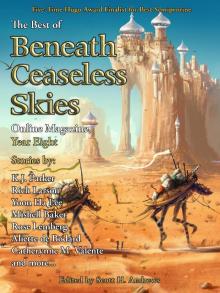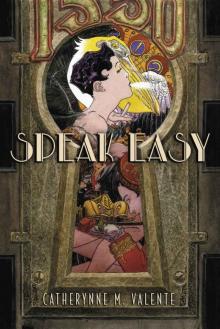


Seafurrers
Philippa Sandall
USS Alabama: Ship’s Gunner and Gunner’s Mates, 1903.
Note the kitten and parrot mascots.
USS Memphis Forecastle Log, June 3–9, 1916: “June 4. Held divine services on board. The Marines seemed to be well supplied with ‘Mascots’ such as goats, dogs, cats and parrots.” Logs like this one were issued on Sundays as postcards that sailors could mail home to give their families an idea of where they were and what they (and their mascots) were up to. This, of course, was all before the US entered World War I on April 6, 1917.
INCIDENT 31: Spick-and-Span
USS Maine, Berth Deck Cooks, 1896
ACCORDING TO BART
These spick-and-span pots and pans are worthy of a prize. And it wouldn’t be the first prize these deck cooks walked away with. Spearheaded by former plumbers Mario and Luigi (not identified in the photograph), the Maine mess crew took home the fleet’s “Most Excellent Mustache” competition for three years in a row. They may well have gone on to greater mustachioed glory and made it a magnificent four, but a massive explosion onboard at 9:40 PM on the night of February 15, 1898, sent the Maine to the bottom of Havana Harbor, plunging the United States (eventually) into war with Spain and leading to its acquisition of Guam, Puerto Rico, the Philippines, and a naval base at Guantánamo Bay, and the building of the Panama Canal.
A spontaneous fire in a coal bunker that set off a nearby ammunition store was the likely cause. Others saw sabotage, blamed the Spanish, and agitated for retaliation. Front-page trumpeting in Joseph Pulitzer’s New York World and William Randolph Hearst’s New York Journal would give today’s fake-news tweets an “alternative facts” run for their money.
More US naval personnel died in the Maine explosion than were killed during the entire Spanish-American War that followed. The Maine’s death toll? Two hundred and sixty men and two seafurrers, including the berth cooks’ beloved mascot cat.
Tom, the ship’s third seafurrer, survived and became a national hero among animal rights activists, who included Mrs. Charles Sigsbee, wife of Maine’s commanding officer. “Tom was wounded in one foot,” she reported, “and was doubtless feeling very blue indeed, with his favorite sleeping-place destroyed, no friendly hands to minister to his wants, and nothing but ruin and water on every side!”
His savior was Commander Richard Wainwright, Maine’s executive officer (and great-great-grandson of Benjamin Franklin). He found Tom and took him to USS Fern, where he was treated for a wounded foot. Tom agreed to pose on a wicker armchair that had been salvaged from the Maine a few days later. It is reliably reported the photographer needed a whole fish to tempt him to stand on his sore paw.
INCIDENT 32: Turning Tricks
“Mascots or Pets on Our Warships”
Wray Rattler (Wray, Yuma County, Colorado), April 21, 1911
“
When a warship is engaged in an extensive cruise, the majority of the men aboard have, at one time or another, plenty of leisure at their disposal, and they devote a considerable portion of it to teaching tricks to the pets aboard. Many persons who have witnessed the really wonderful ‘stunts’ done by naval mascots or have noticed four-footed mascots marching in parade with a naval battalion, and conforming to all the military orders given, have gained the impression that the bluejackets possess an especial and almost unique knack for instructing dumb animals. The secret of their success, however, lies in the devotion of much time to the task, combined with the circumstances that the tars have a seemingly inexhaustible supply of patience and an almost unfailing fund of good humor, which, when reinforced by plentiful supplies of sweets, will ultimately win over the most stubborn furred or feathered captive.
One of the most remarkable tricks to the credit of any naval mascot is that of a famous cat that was domiciled aboard the cruiser Chicago a few years ago. This cat would sit on its hind legs and ‘salute’ with one front paw when the band played ‘The Star-Spangled Banner,’ and any person who knows how difficult it is to teach tricks to cats can appreciate what this performance meant.
”
ACCORDING TO BART
Getting the Chicago’s cat to salute on cue is simply standard behaviorist training or operant conditioning—rewarding the desired behavior to encourage the animal (or person) to do it again (and again). This is what animal trainers and pet owners have been doing for hundreds of years, long before B. F. Skinner dipper-trained rats to press the right button to get water (and not a shock).
The Investigator [Spyall] crew trained Trim enthusiastically, said Matthew Flinders:
His exercises commenced with acquiring the art of leaping over the hands; and as every man in the ship took pleasure in instructing him, he at length arrived to such a pitch of perfection that I am persuaded, had nature placed him in the empire of Lilliput, his merit would have promoted him to the first offices in the state.
“Leaping over the hands” is still a popular trick. It’s not hard to teach (or learn). It’s done in easy stages with generous rewards along the way. To get a seafurrer to jump like this on command, his shipmate first rewards him for walking over a stick lying on the ground, and then for stepping over a slightly raised stick, and finally only for jumps.
Incidentally . . .
As for rewarding seafurrers for performing by having a plentiful supply of sweets, it’s unlikely. Sea cats can’t be bribed or rewarded with a sweet treat. However, a tasty meaty tidbit will do it. As will a nice piece of fish. It’s said that the photographer had to give Tom—the only one of the Maine’s mascots who survived the 1898 explosion (see here)—a whole fish before he would
stand properly for a photograph.
Why won’t sweets work? Felines don’t have a soft spot for things that taste sweet because our taste receptors can’t detect sugar (big cats like tigers and cheetahs can’t taste sweet, either). To get science-y, the taste receptor for sweetness is located in two genes that code for two proteins, both of which are involved in a human’s ability to enjoy (and crave) sugary treats. In cats, a chance mutation appears to have broken one of these genes, and that’s why lollies won’t tempt them to leap through hooped hands.
INCIDENT 33: Under Fire
“Cat Does Some High Jumping During Fight: Feline on Board English Armed Liner Badly Frightened by Noise of Big Guns”
Sacramento Union, January 4, 1915
“
LONDON, Jan. 3.—During the fight in which the armed liner Carmania sank the German commerce destroyer Cap Trafalgar, the ship’s cat on the Carmania broke various world’s records in sprints and high jumps, writes a member of the crew to friends in London.
‘The old cat didn’t seem to know what to make of it,’ says the letter. ‘He was on ordinary occasions a lazy kind of a cat, and spent most of his time hunting sunny corners for sleep. But when the firing commenced, he covered the whole ship like a streak, from foc’sle head to stern, on deck and below, trying to climb masts and scramble up the funnel, and every time a gun was fired, he would jump up in the air as high as the tops of the freight booms. It was some time after the fight before he quieted down to his old habits. But we will match him against any other cat in the world in his peculiar kind of athletics.’
”
ACCORDING TO BART
This is the best of British humor—making light of grim business. Most likely the writer was trying to reassure the folks back home that he was OK. After all, he had just survived one of the earliest naval battles of the First World War. On September 14, 1914, the Carmania sank the Cap Trafalgar, but she didn’t get off scot-free. She received seventy-nine hits and was badly damaged, her bridge wrecked and nine crew killed.
People react differently under fire, and so do animals. Some seem to be able to take it in their stride; for others, discretion is the much better part of valor. Gilbert Adshead, engine room artificer on HMS Lord Nelson, backed this up with personal experience. He reported:
We had a black and a tabby cat. Now, the strange thing about the black cat was, gunf
ire never worried him a bit. He’d walk about on the top of a 12 inch turret when the 12 inch gun was firing. . . . His fur would stand right, completely up on end. He’d just look round and see what was happening, and never move. The tabby cat was terror-stricken. It was a long time before we found where he used to hide.
Navy ships had a lot of mascots in both world wars. Being good team players and natural morale boosters, seafurrers were probably the most popular, providing light relief and distraction. The cameras absolutely loved them, and they were frequently photographed in or on gun barrels, in their special hammocks, in or on hats, and at work or play and performing tricks.
Tudor Collins photographed this cat (detail) during the Second World War at Devonport Navy Base in New Zealand. No names, no dates, but the sailors were most likely the crew of a coastal mine sweeper.
Incidentally . . .
Millions of animals were recruited in the First World War. Alan Taylor of the Atlantic explained why:
When the war began, Europe’s armies had an understanding of warfare that put the use of cavalry in high regard. Soon, however, the deadly terrain that evolved around trench warfare rendered cavalry attacks nearly useless on the Western Front. But the need for constant resupply, movement of new heavy weaponry, and the transport of troops demanded horse power on a massive scale—automobiles, tractors, and trucks were relatively new inventions and somewhat rare. British and French forces imported horses from colonies and allies around the world, a near-constant flow of hundreds of thousands of animals across the oceans, headed for war. One estimate places the number of horses killed during the four years of warfare at nearly 8 million. Other animals proved their usefulness as well: Dogs became messengers, sentries, rescuers, and small beasts of burden. Pigeons acted as messenger carriers, and even (experimentally) as aerial reconnaissance platforms. Mules and camels were drafted into use in various war theatres, and many soldiers brought along mascots to help boost morale. Only a couple of decades later, at the onset of World War II, most military tasks assigned to animals were done by machines, and warfare would never again rely so heavily on animal power.
INCIDENT 34: First Aid
“Catnipped! The True Tale of Thomas Whiskers, USN”
Grog Ration, March–April 2008 (now the Grog)
“
13 December 1919
From: Commanding Officer, USS Solace
To: Commanding Officer, USS Bell
Subject: Ship’s Cat
Several members of the crew of this ship have informed me the commanding officer that the mascot of the Solace, Thomas Whiskers, has been kidnapped or catnipped [sic] by certain members of your crew and is being impounded on board your ship. This mascot is a large, black Tom and when last seen was in dress uniform consisting of a leather collar with brass tag marked USS Solace.
If this cat is on board your ship, please inform me and I will send a member of the crew for it.
RWP
1920
From: Commanding Officer, USS Bell
To: Commanding Officer, USS Solace
Subject: Your letter of Dec. 13, 1919
Your ship’s cat ‘Whiskers’ is being returned under guard, but an explanation of his presence aboard the ship is no doubt due you.
Prior to our departure from alongside the Solace, the cat in question developed a warm regard for the USS Bell, consequently spending much of his time aboard. On the morning we shifted berth his presence aboard was unknown to us. Later in the day after your ship had sailed, he was found to have taken possession of an unoccupied stateroom. The master-at-arms immediately made him prisoner on the ground that he was a stowaway and incarcerated him in the paint locker. This will account for the fact that he is no longer the black cat you describe, but battleship grey.
We advise against the removal of this collar since its low visibility aids the performance of his duties.
In regard to the dress uniform worn by the prisoner—
in his attempts to remove the paint he pulled off the collar and lost it. This ship feels under no obligation in regard to the latter. In adding one ten cent collar to its stores it lost $2 worth of paint.
”
ACCORDING TO BART
That really was the actual correspondence between the skippers of the hospital ship USS Solace and the destroyer USS Bell, regarding the disappearance of mascot Thomas Whiskers.
Solace was a hospital ship, so it’s likely he played a key role providing comfort and cheer, perhaps speeding recovery by helping reduce stress. Pet therapy and companion animal research reports patients are happier, more alert and active, and less anxious when a pooch or a puss pops by.
Commissioned on April 14, 1898, for the Spanish-American War, Solace was one of the US Navy’s first hospital ships and the first to fly the Red Cross, making it neutral under the terms of the 1864 Geneva Convention. At the time, the US Navy was very much in uncharted territory with hospital ships. With the exception of Civil War hospital ship USS Red Rover (1862–65), the US Navy did not operate a ship that was used solely for the purpose of tending to the sick and wounded and providing medical supplies. All that changed when the Solace came on the scene. US Navy Bureau of Medicine and Surgery medical historian André Sobocinski filled me in on the background:
For the Spanish-American War, USS Solace was fitted to care for 200 patients comfortably (either in berths, swinging cots or staterooms). Her hospital was staffed by five medical officers, three hospital stewards, four mess men, and two laundry men. The ship carried steam launches and a barge for transferring the sick and wounded at sea, and had steam winches on both sides of its upper deck for the hoisting and lowering of the wounded. She would pick up her first patients (57 sailors and marines) on June 5 from ships that took part in the bombardment of San Juan, Puerto Rico. Among her many claims in the Spanish-American War was the first antiseptic surgery performed at sea.
She is the first of 20 Navy hospital ships to be blessed with a (daresay) soothing name. Originally known as the Creole—an ocean steamer from the Cromwell line—she was converted into a Navy hospital ship within 16 days. Her new name—USS Solace—was given to her by Margaret Long, the daughter of the Secretary of the Navy. Every US Navy hospital ship since 1898 has followed the Solace’s lead and been given a name denoting healing, peace, and refuge.
From 1908 to 1921, every ship captain was a medical officer. Usually ships are commanded by line officers. There were those in the Navy Medical Department who thought that hospital ships—as medical ships—should be commanded by physicians. While still president, Theodore Roosevelt agreed and directed that Navy medical officers be allowed to serve at the helm of hospital ships. Typically, since 1921, physicians and other medical-staff officers are able to serve as the Commander of the hospital or MTF (Military Treatment Facility) aboard the ship.
Incidentally . . .
A few years later, Thomas Whiskers was featured on a postcard. This one probably dates from 1921, says collector Brian Buckberry, as the Relief, the first US Navy ship designed and built from the keel up as a hospital ship, wasn’t commissioned until December 28, 1920. In a personal communication, Brian shared a bit of postcard history:
The beginning of the picture postcards that we know today is generally thought to be the early 1890s. Many references will point to the 1893 World’s Exposition in Chicago as the start of picture postcards. They created numerous cards featuring scenes from the fair. The peak of the postcard collecting craze was around 1910 when the number of cards being traded around the world was phenomenal. That fortunately is the same time when the battleships became popular, so there are lots of early Navy postcards to be found. World War I set the postcard world back a bit because many of the best publishers of printed postcards were in Germany [a postcard of the Chicago’s cat saluting, story here, was made in Germany]. But American, British, and French companies picked up the slack and continued making cards. Real photo postcards such as Tom Whiskers were popular from the early 1900s up to
the 1940s. The 1930s–1940s saw the start of the “linen” postcards that have a texture to them, and the 1960s is when the “chrome” postcards that we know today were created.
INCIDENT 35: The Real Deal,
or Tall Tale Deconstruction
“The Discovery’s Mascot”
Brisbane Courier, September 30, 1931
“
Among the vast miscellany of mascots given to various members of the recent Mawson expedition to the Antarctic was a suspicious looking bag, passed on board just as the Discovery was drawing away from the dock side at Capetown. The present bore a label: ‘Open beyond three-mile limit.’ The bag was passed below with a host of last-minute parcels, and forgotten, and it was not until the following day that a mewing coming from the bundles induced the bo’s’n to make an investigation. Bo’s’n Martin located the sound, which came from the suspicious bag, and on opening it a black kitten hopped out. . . . As the cat grew up she became a regular ‘sea dog,’ climbing aloft with the seamen, and venturing out on to the rocking yards. While navigating the ice-strewn seas, [she] slipped from the shrouds and fell into the sea. Martin saw the fall, and, rushing to the side, dived overboard to the rescue. It was some time before the vessel could be pulled up and a boat lowered. By the time this was done, Martin’s strength began to give out and his muscles to contract with the icy cold. Both were rescued just in the nick of time. During the second voyage of the Discovery, . . . the alarm was given that there were four stowaways hidden beneath the boatswain’s bunk, and on investigation four piebald kittens were discovered, which all survived. On the last stage of the voyage the Discovery encountered violent weather between Hobart and Melbourne, and one night [she] disappeared, being washed from the fo’castle head, while keeping watch with the bo’s’n.














